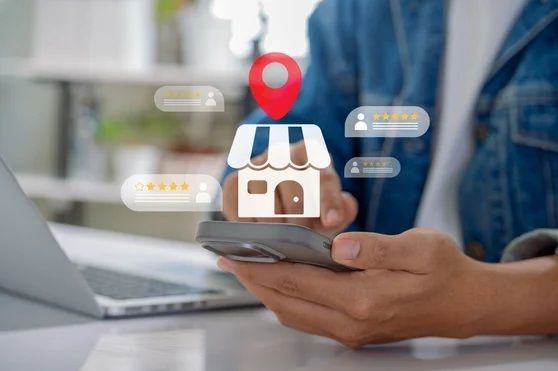The Importance of Keeping Your Lead Generation Pipeline Full

Editor’s Note: This post was originally published in March 2021 and has been updated with additional information and updated resources on February 2022.
As a business owner, you want to see as many people as possible experience your product or service. While having an excellent product or service is essential, that in itself won’t take you far if no one is interested in it or willing to pay for it.
The growth of your business and sales depends on your ability to identify interested people who might benefit from what you have to sell and encourage them to make the journey from interest to purchase. The higher this number, the greater are your chances of success. So how do you ensure this queue of people keeps growing? You want it to extend out the door, round the block, and even further.
The process of building this pipeline of customers requires you to get their attention first, often through digital marketing. This approach is known as lead generation. Let’s try and understand this concept a little better.
What is Lead Generation?
In simple terms, the people or organizations interested in what you are selling are called leads. You could also think of them as potential customers. Now, there may be thousands of people, if not more, who might know that you exist but haven’t shown any interest in what you have to offer.
They can’t help your business grow if they remain indifferent towards your brand. You have to pique their interest before you can think of selling to them. This process of getting someone’s attention and converting them into potential customers is known as lead generation.
Why is Lead Generation Important?
To ensure your business continues to grow and expand, you need to reach more people who could be your potential buyers and elicit interest in your product or service. You should see a steady inflow of people who are interested in exploring what you have to offer. Of course, you are not alone in wanting this for your business. Every business owner or marketing executive has the same goals as you.
In a world where attention spans are limited, and distractions are infinite, attracting potential customers is getting trickier. More and more businesses are vying for this attention, so why should individuals lend their eyeballs or ears to you?
While it may sound simple, generating the right kind of leads can be challenging. Therefore, it is vital to invest time and effort into getting this right. Here are a few statistics to set the context:
- As per a Marketo study, companies with effective lead generation strategies have at least 133% more revenue than companies that have not put the right strategy in place.
- It is only natural then that the number one priority for marketers is lead generation, as Hubspot noted in their report on marketing statistics.
- Despite lead generation being the number one priority, 61% of marketers consider lead generation to be their biggest challenge.
You now understand the importance of lead generation and want to do this well. The surest way to do so is to have the right strategy in place. Before you develop this strategy, there’s one key question you need to answer.
Who Is Your Target Audience?
Every business caters to a particular audience. These are the people who may want to explore your product or service, and they’re the ones you want to identify and sell to. There are various factors such as age, income, geographical location, and gender which will determine your target audience.
For example, there may be two businesses selling handbags. However, one sells luxury handbags, and the other focuses on affordable handbags for everyday use. Their target audience will be very different even though they sell the same category of products. The income of the buyer is the criteria that separate the target groups of these two businesses.
Before you start designing a lead generation strategy, jot down as many details as possible about your target audience. In fact, go a step further and create buyer personas. It will help you design a lead generation strategy that is much more effective since it is tailored to the needs of a particular group of people.
Lead Generation Approaches
Once you’ve identified your target audience, the next step is to determine how you will reach these people with digital marketing. There are two ways of doing this:
Outbound Marketing
Outbound Marketing is when you initiate contact with people to generate interest in your product or service. It could be through cold calling, direct emails, billboards, radio, TV, magazine, and newspaper advertisements.
Inbound Marketing
Inbound Marketing focuses on drawing people in by creating content that is relevant to them. You pull them towards your company through content that aligns with their needs and interests.
Which One Should You Choose?
While it is a decision you need to take, keeping your target audience and the buyer personas in mind, here are some statistics that will help:
- 86% of people skip television ads
- 44% of direct mail is never opened
- 91% of email users have unsubscribed from company emails they previously opted into.
- 200M Americans have registered their phone numbers on the FTC’s “Do Not Call” list.
- Inbound Marketing costs 62% less per lead as compared to a traditional outbound marketing campaign.
- Inbound Marketing not only helps generate leads but also increases customer acquisition.
- 3 out of 4 inbound marketing channels cost less than any outbound marketing channel.
If we go by these statistics, it is evident that inbound marketing is far more effective and provides a greater ROI than outbound marketing. It is primarily due to customers being bombarded with information left, right, and center. This has made them pickier about what kind of content they want to consume.
Customers are also spending more time doing their research and actively identifying brands they want to engage with. So you now want to make it easier for your potential customers to find you rather than the other way round.
While inbound marketing is great, you should definitely not write off outbound marketing. Depending on your target audience, certain outbound marketing tactics can be beneficial. Trade shows, conferences, events, and published content in print media can help reach certain categories of people.
Lead Generation Channels
If you’re sold on inbound marketing and want to build your lead generation strategy around it, you need to identify what channels you will focus on to generate leads for your business. Here are the best digital lead generation channels:
Website
One of the easiest and most effective ways of generating leads for your business is through your website. Having a responsive website that looks good and is easy to navigate can be great at helping build a pipeline of leads. It is important to ensure that your website is mobile-friendly since most users access websites from their mobile devices.
Search Engine Optimization (SEO)
People often look for products and services through search engines. You can have a website and a social media presence, but a potential customer will only be able to find you if you’re ranked high on a Search Engine Results Page (SERP). The ranking depends on how SEO-friendly your website is. SEO includes the keywords found on your website and the kind of links included in your content.
It is not enough to have a website. You need to ensure it is optimized for search engines so that people can find you when they look for certain phrases and keywords associated with your business.
Email Marketing
Email marketing is considered one of the best ways of generating leads. And the stats make it clear – two-thirds of subscribers like to receive branded emails at least once a week, and beyond that, 87% of B2B marketing professionals say that they consider email one of their top free organic distribution channels.
It is also the channel that provides the best return on investment. As per a 2021 Litmus study, for every dollar you spend on email marketing, you can expect a return of $36 (with A/B testing increasing your marketing ROI by as much as 37%). If you want to know more about the latest email marketing best practices, check out our most recent webinar and its recap, How to Make Email Marketing Work for Your Business.
Content Marketing
Content marketing is considered the second most effective when it comes to generating leads. To generate leads, you have to ensure your content is interesting, useful, and adds value to your potential customers. That alone doesn’t guarantee traffic since your content has to also be easy to find on the platforms your target audience frequents the most often.
You can experiment with various types of content such as blogs, videos, and infographics to see which works best for your target audience. Thankfully, it’s straightforward to track engagement through various analytical tools. You should evaluate your content’s performance regularly to determine which of these formats is most effective at generating leads and focus more on that.
Social Media Marketing
There are over 4.62 billion social media users globally, which is 58.4% of the world’s population! If you are looking for more leads, you have to tap into social media. In fact, 54% of social media users are using these mediums to research products. Not having a social media presence or not utilizing it to generate leads is like leaving money on the table.
These channels will help you build a solid foundation for lead generation. It will require you to consistently put in the time and effort to ensure your content, social media feeds, and website remain updated and relevant. However, this will allow you to build a pipeline that remains full and continues to grow.
Along with this, you can complement your lead generation channel strategy with digital advertising. It can give you another avenue to reach your ideal customers and generate leads faster.
You can also try some other lead generation ideas such as Pay-Per-Click advertising, remarketing, and landing pages for your business.
The Essentials of Lead Generation
At its simplest, lead generation is the process of unearthing prospects that stand a strong chance of being converted to sales. Sales and marketing professionals have been focusing on lead generation since long before the advent of digital marketing. With digital platforms, however, generating good leads depends on knowing and applying a number of key concepts.
Capture Web Visitors Before They Bounce
It is not enough just to generate a lead. If the conversion isn’t instant – or as near to it as possible – it is very likely that the salesperson will lose the sale. It is not enough to gather contact information from a prospect and then hand it on to a salesperson to initiate contact at a later stage. That iron grows cold very quickly!
The ideal is automated, an immediate conversion that feeds prospects directly into your sales funnel. There are several digital tools available for doing just that. Even if it isn’t always achievable, it should be the aim: capture your visitors before they bounce.
Top-of-Funnel Focus vs Full-Funnel Focus
Many digital marketers get caught up in a top-of-funnel approach. At the top of the sales funnel, you are focusing on offering content that introduces your business and entices people to give you their contact details. It is the Awareness stage of the funnel, and it is more about quantity than quality.
As you progress down the funnel to the Consideration and Conversion stages, some of your prospects will fall away and you will focus on converting those leads who are more interested and committed. The problem with putting most of your focus on the top of the funnel is that your team may be more inclined to build up large contact lists and think they have done well. In reality, however, there is no saying how many of those contacts will lead to sales. You should instead adopt a full-funnel focus, dedicated to taking qualified leads through the entire length of the funnel from Awareness to Conversion.
Slower Sales vs Faster Sales
Many of the principles of sales—which have been in place since well before the digital age—remain the same. One well-tried dictum states that a fast “no” is better than a slow “yes.” Even though you need to nurture leads, you obviously want to convert them as quickly as possible.
That being said, you need to find a favorable middle ground. If you try to go too fast, you may lose the customer. And if you go too slow, the customer may lose you! Fast conversion is not about pushing. You should rather focus on getting in sync with your prospects. If you offer them what they want, when they want it, they will convert.
Contacts Creation vs Customer Creation
Looking back at the contrast between the top-of-funnel and full-funnel approaches, it is easy to see that one focuses on the acquisition of contacts, while the other is aimed at finding paying customers and taking them through the sales process. It is very important that digital marketers don’t get caught up in merely compiling long lists of contacts.
Your marketing success is measured by the number of sales you close, not the length of your mailing list.
Why You Should Automate Lead Generation
Sales staff have a lot to do during the day. And, on top of it, they also face a constant barrage of information that they then need to interpret as they seek to convert leads to sales.
How should they prioritize leads? What leads should be nurtured? How should they track their progress? Rather than expecting your sales team to grapple with these questions, set up automated processes that can handle these queries for them instead. You can automate large parts of your lead generation process to ensure that good leads don’t get lost—and that time isn’t wasted on poor ones.
Beware of Bad Leads
Not all leads are worth your while – this has always been true for sales and marketing professionals. Generating a lead is not, in itself, a measure of success: only converted leads matter at the end of the day.
Unfortunately, it is all too easy to run after a bad lead thinking it is a good one. Avoiding this requires, not only discernment on the part of your sales staff but also judicious use of lead automation systems. Automation frees your team from having to perform time-consuming admin tasks and lets them focus on identifying and pursuing only the strongest leads.
Look out for red flags such as when leads tell you they don’t have the budget for your products or avoid your calls and emails. Most importantly, make sure you are talking to people who have the power to make a purchase decision.
The Art of Identifying the Decision-Maker(s)
One of the biggest mistakes that salespeople make is wasting time and energy chasing people who are not in a position to make buying decisions. You may have the contact details of a particular staff member at a company that seems to be a perfect client for your business. However, no matter how interested they are in your product, they cannot sign off on a sale.
Don’t make the mistake of thinking that only top-level management can make these decisions. Purchase decisions are often left in the hands of mid-level management such as procurement managers or team leaders. Before you try to convert your leads, you need to know that you are addressing a decision-maker.
The question is, how do you identify a decision-maker? To make sure you get in touch with the right people, ask your lead:
- Who will be using the product every day?
- What departments would most benefit from the product?
- Who made the decision to look for a new solution in the first place?
- Who else should be contacted or invited to meetings and product demos?
Automation Tools That Make Lead Generation a Breeze
Lead automation involves using a number of separate tools that work together to refine and focus the lead generation process. One example is conversational chatbots, which enable businesses to automatically qualify and talk to more leads, book more meetings, and close deals faster.
Landing pages are also extremely helpful: they can be tailored to perform different functions, from gathering data to offering information, to leading directly to sales pages. There are also online tools that can help you organize and prioritize your leads, and track specific information that will help your sales team to identify good leads and decision-makers.
Lead Generation FAQs
What is the lead generation process?
The lead generation process can be divided up in different ways, depending on who you ask. Here is a seven-step approach that we find useful:
- Research your target market: Make sure that you have a secure handle on your target market. Research them and the best ways to reach them. The more insight you have into your audience, the easier it will be for you to reach them.
- Create compelling content: Generate good content that is designed to appeal to your target market. Great content is the key to lead generation.
- Share the content: Post your content on your website and promote it across your social media platforms. Optimize the content so that potential leads can find it, and be sure to include calls to action to draw customers into your sales funnel.
- Nurture existing leads: Your content and promotion should bring new prospects into your sales funnel. Now you need to nurture them and move them towards conversion. Direct email marketing is an extremely effective tool in this regard.
- Prioritize your leads: You should be able to work out which leads are worth pursuing – or your automation tools will do it for you. Prioritize the best leads and pursue them.
- Pass strong leads to the sales team.
- Assess your lead generation process and adjust where necessary: Always keep an eye on your strategies and check the results. Don’t be afraid to make adjustments if something is less effective than it should be.
What is the difference between pipeline and lead generation?
The main difference between these two approaches is that lead generation is oriented towards the top of the funnel, while pipeline marketing looks at the bigger picture and takes a full-funnel focus.
How do you structure a pipeline?
Sales pipelines are often represented as a funnel, and sometimes as a horizontal line. It works either way. What is important is that the pipeline should be divided up into parts that represent your company’s sales process. In general, a pipeline might be divided up into the Awareness, Consideration, and Conversion sections, for example. You may want to name these sections differently or break them into even smaller parts. Just make sure that it is a logical and easy-to-follow representation of your sales process.
Is lead generation dead?
Lead generation remains a vital part of any digital marketing strategy. In fact, it is the main objective of online marketing. As such, it is still very much alive.
What is fading out is the old conception of lead generation as a top-funnel-focused activity. Effective lead generation is now expected to follow a full-funnel-focused model.
What’s Next
So now you’ve seen the importance of lead generation and keeping your pipeline full. You’ve identified your target audience and built the buyer personas. Based on this, you’ve identified your lead generation channels and built your strategy.
Leads are now slowly trickling in. The pipeline is filling up steadily. Is your work done here? Nope. Not all leads are equal. As they keep coming in, it is important for you to continuously evaluate these leads, segment them, qualify them, and eventually convert them.
A person has taken the first step by showing interest in what you have to sell. You now have to take them from the top of the sales funnel to the bottom. However, it is important to understand that not all your leads will buy from you. In fact, it is believed that only 10%-15% of all leads convert into paying customers.
It becomes critical to identify those leads most likely to buy from you and focus on them. You can do this by scoring your leads based on certain criteria. You can look at factors such as how closely aligned they are to your buyer persona if they have visited your website, engaged with your social media posts, opened your emails, or shown any intention of purchasing from you, and so on.
Once the scoring is done, focus on converting those with the highest scores. Also, try to keep the ones with median scores engaged since they may convert at a later stage. Rinse and repeat for a great pipeline of leads.
Conclusion
Lead generation is the cornerstone of any business. It not only helps you reach more people and boost revenues but also plays a vital role in building your brand. When it comes to lead generation strategies, there is no one size fits all approach. It is a process of continually evaluating who your target audience is, how best you can reach them, and what it would take to convert them into happy, paying customers.
A good lead engagement strategy not only keeps your pipeline full but also pays attention to nurturing and building lasting relationships with your leads.
If you’re struggling to generate leads and want to hire an expert team to help, contact us ASAP to get started!
About the Author
Rick spent 20 years in the insurance industry in finance, primarily developing reporting platforms for B & C stakeholders. His ability to speak to consumers of data (managers and analysts) and translate their needs to programmers led him to start his own digital marketing agency in 2004 to develop data driven solutions for business owners.
The Best Digital Marketing Insight and Advice
We are committed to protecting your privacy. For more info, please review our Privacy and Cookie Policies. You may unsubscribe at any time.
Don’t stop the learning now!


